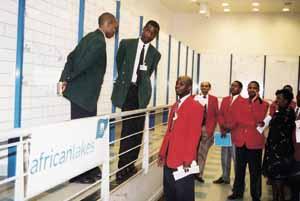The official Kenya Government statement reads: The fact that we got $14billion in investor appetite reflected the continued support the country receives. We now have a dollar yield curve stretching out to 30 years, making Kenya one of only a handful of government’s in Africa to achieve this.
The funds are earmarked for development initiatives, liquidity management, and ambitious infrastructure programs. It goes further to add that the Eurobond issue will be listed on the London Stock Exchange and that the joint Mandated arrangers were Citi, J.P. Morgan, Standard Bank, and Standard Chartered Bank.
The @KeTreasury is pleased to announce the successful pricing of a new $2billion Eurobond issue at the @LSEplc following a successful roadshow conducted with international investors which resulted in a significant level of interest expressed in the issue. #EconomyKE pic.twitter.com/U5kK8Eg1JR
— CS Henry K. Rotich (@HKRotich) February 22, 2018
There was little awareness about the bond, no prospectus was publicly released, and there was no indication on which investors the Eurobond was being pitched to, but it appears that the successful issue will be dated February 28, 2018.
Eurobond selling. Opened today. Value dated 28 Feb. If you have loose $200,000 rush! Selling like hot cake!
— Mohamed Wehliye (@WehliyeMohamed) February 21, 2018
The Eurobond breakdown is for a mix of two equal halves of 10-year and 30-year bonds, priced at 7.25% and 8.25% respectively.
#Kenya is in the #Eurobond market today. It is selling 10-year dollar debt with initial price talk of around 7.625% and 30-year debt with initial price talk of ~8.625%. @markets
— Paul Wallace (@PaulWallace123) February 21, 2018
The announcement comes after some potentially embarrassing news reports that the International Monetary Fund had cut off a line of funding, a statement which was later retracted, and others that Moody’s had downgraded Kenya’s ratings, a claim which the government also disputed.
IMF Statement on February 20, 2018, clarifying status of Kenya’s Precautionary Arrangements: https://t.co/jtynjYG3O5 pic.twitter.com/NaCX02TPas
— Central Bank of Kenya (@CBKKenya) February 21, 2018
But the ratings cut, and the mysterious IMF news (and retraction) did not appear to have an impact on the pitch to investors.
So far order book at $13.3bn. GoK only wants $2bn. So much for Moody's and imf's interference 😎
— Mohamed Wehliye (@WehliyeMohamed) February 21, 2018

